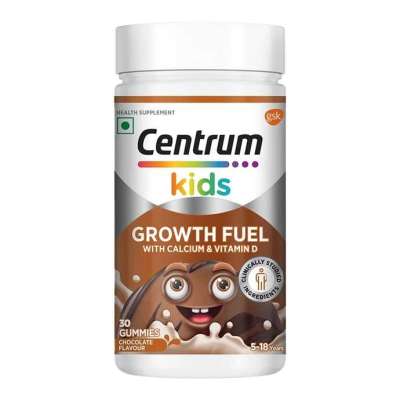Aspect Ratio Calculator
https://calculatetheratio.com/16x9-aspect-ratio/
The 16:9 aspect ratio is a widely adopted format in photography, videography, and digital display industries. Whether you're a content creator, a videographer, or simply someone interested in screen dimensions, this guide will help you understand why 16:9 is the preferred aspect ratio and how it affects various media types.
What is Aspect Ratio?
In the simplest terms, an aspect ratio is the proportional relationship between the width and height of an image or screen. It’s expressed as two numbers separated by a colon, such as 4:3, 1:1, or 16:9. The aspect ratio does not dictate the actual size of the image or display but rather the shape.
Why is Aspect Ratio Important?
Aspect ratios affect how content appears on screens, influencing framing, composition, and overall user experience. A mismatch in aspect ratios may lead to cropping, letterboxing (adding black bars), or stretching of the image. This is particularly crucial for those in media creation, as content designed for one aspect ratio may not translate well to another.
The 16:9 Aspect Ratio: Explained
Definition of 16:9 Aspect Ratio
The 16:9 aspect ratio, also known as "widescreen," signifies that for every 16 units of width, there are 9 units of height. This aspect ratio became popular in the early 2000s and quickly replaced the previous standard, 4:3, for televisions and computer monitors. The 16:9 format is now a global standard for high-definition (HD) media and is commonly found in various display devices, including smartphones, tablets, TVs, and computer monitors.
16:9 in Pixels: Common Resolutions
16:9 displays come in a variety of pixel resolutions that maintain this aspect ratio. Here are some of the most common:
1280 x 720 (720p) – HD (High Definition)
1920 x 1080 (1080p) – Full HD (FHD)
2560 x 1440 (1440p) – Quad HD (QHD)
3840 x 2160 (4K UHD) – Ultra High Definition
These resolutions are integral to modern media consumption and content creation, providing sharp and clear visuals suitable for a range of devices.
The Widespread Adoption of 16:9 Aspect Ratio
Historical Context of 16:9
Before 16:9 became the industry standard, the 4:3 aspect ratio was the norm for most television and computer screens. This format worked well for early TV broadcasts but was limiting for cinematic and high-definition content. As widescreen TVs became popular, the demand for a more cinematic viewing experience increased, leading to the widespread adoption of 16:9.
Applications of 16:9 in Different Media
Television and Streaming: Most modern TV shows, movies, and streaming platforms use 16:9 for compatibility across devices. This ensures a consistent, immersive experience for viewers.
YouTube and Online Video: YouTube's standard player is designed for 16:9 content. This aspect ratio is optimized for sharing videos across platforms without letterboxing or cropping.
Smartphones and Tablets: Many mobile devices use a variation of 16:9 (often slightly narrower) for a similar widescreen effect, which enhances the viewing experience for video content and gaming.
Comparing 16:9 to Other Aspect Ratios
Aspect ratios like 4:3, 21:9, and 1:1 are still in use but serve different purposes. Here’s a quick comparison of 16:9 with these alternatives:
16:9 vs. 4:3: While 4:3 was the traditional aspect ratio, it has a boxier look, which doesn’t align with today’s widescreen standards. 16:9 offers a broader field of view, ideal for high-definition visuals.
16:9 vs. 21:9: Known as "ultra-widescreen," the 21:9 aspect ratio provides an even wider field of view than 16:9, often used for cinematic and gaming experiences. However, 21:9 is less common for standard media and is mainly reserved for specific applications like gaming monitors and movie theaters.
16:9 vs. 1:1: The 1:1 aspect ratio is primarily seen on platforms like Instagram, where square images and videos are preferred for layout purposes. While excellent for social media, 1:1 lacks the immersive width of 16:9.
Calculating the 16:9 Aspect Ratio
If you’re creating content and need to maintain the 16:9 aspect ratio, it’s essential to understand the ratio's dimensions. Here’s a quick formula to calculate the height if you know the width (or vice versa):
Formula: Width / 16 = Height / 9
Example: For a width of 1920 pixels, you can calculate the height as (1920 / 16) * 9 = 1080 pixels.
Benefits of 16:9 Aspect Ratio
1. Widespread Compatibility
The 16:9 aspect ratio is widely supported across devices, platforms, and applications. Its ubiquity makes it the ideal choice for universal compatibility, especially on platforms like YouTube, streaming services, and social media.
2. Immersive Viewing Experience
With its broader field of view, 16:9 is excellent for visual storytelling. It allows for more dynamic framing, making it popular for filmmakers, photographers, and video producers.
3. High-Definition Resolution Support
16:9 is suitable for high-definition formats (HD, FHD, 4K), which require more horizontal screen space to render intricate details. This is a significant advantage for content creators and consumers who seek high-quality visual experiences.
Challenges of Using 16:9 Aspect Ratio
While 16:9 has several advantages, it’s not without limitations:
Cropping for Different Formats: 16:9 content often needs adjustment when shared on platforms that favor other ratios, such as social media.
Limited Vertical Space: For certain types of photography or content, such as portraits, the horizontal emphasis of 16:9 can be limiting.
Mismatch in Specialty Displays: Ultra-wide monitors and VR headsets often use alternative aspect ratios for a more immersive experience, making 16:9 less effective in those cases.
Conclusion: Why 16:9 Remains the Standard
The 16:9 aspect ratio strikes a balance between a wide field of view and compatibility across devices. From cinema screens to smartphones, 16:9 adapts well to the modern media landscape, enabling a consistent and visually engaging experience. It continues to evolve with technology, accommodating new resolutions and formats, making it a reliable choice for creators and viewers alike. Whether you’re working in video production, graphic design, or simply watching content, the 16:9 aspect ratio offers an ideal blend of quality and flexibility.
Like
Comment
Share











